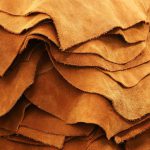Have you ever wondered what lies behind the fences, gates and closed doors you pass on the way to town or to work? We cannot see into the world of the person standing next to us, even into that of the person to whom we are married, to say nothing about what goes by on the side of the road! We might see birds, dogs, scrub or bush, but these properties have a life of their own, veiled to the eyes of the passerby.
A Thursday morning found three of us waiting outside one such gate on the west side of the road linking Johannesburg with the Magaliesburg. The property is just inside the North West Province, beyond SAKATA / Mayford head quarters and Maggie’s Farm, home of what is likely to be the most delicious chicken pie you will ever eat. I had been invited because of the agriculture / environmental elements (wetlands, permaculture, biomimicry) included in Midgard Consulting’s offering, which a colleague believed I would find interesting. Mike Stuart stood now in conversation with Chantelle Murray, from the University of the Witwatersrand, while I imbibed a sense of location and sky.
Bjorn Heyerdahl is the grandson of Thor Heyerdahl, whose Kon-tiki expedition was the subject of a book prescribed for me in high school (Heyerdahl senior crossed the Pacific on a balsawood raft in 1947). I had skimmed through the Midgard website in preparation for the visit, and was enjoying the day’s change of scenery when one Tanya, for whom we had been waiting, drove up behind us. A phone call to say we had arrived, the gate opened and we followed the dirt road to the house where, after a few preliminaries, we were seated in the lounge.
Heyerdahl is comfortable with holding a conversation, and he interacts with everyone in the room, not just the people who are doing most of the talking. He is physically significant but there is a friendliness and tranquillity in his eyes. It would come as a surprise to some to find out that the person who would not look out of place on a Viking longship spent more than four years in an apartheid prison as a conscientious objector! A meeting that was scheduled for two hours lasted three – five if you include the lunch afterwards.
Apart from his own experience and life, Heyerdahl draws from a range of thinkers, among which are Plato, Kant and Ken Wilber (his favourite). He makes use of a methodology of four quadrants and eight elements which he brings to situations and challenges. “My designs are appropriate to any level of consciousness in a person,” he says.
If I want to know a person, he says, I have to look past silos (how would you feel if I “saw” you only in your silo, or judged you by it?) We are unbalanced creatures, and our designs and solutions must take in the breadth and depth of the individual in any situation. We should measure with our whole being. The Rainbow Nation banner of 1994 was not a reference to the racial profileof the country but to the continuum on which the then 47 million inhabitants found themselves. Any culture has this spectrum. It is about consciousness. Heyerdahl’s recognition of the individual is no Ayn Rand tangent either. Rather, it includes the individual; it starts from there. There is a “higher order of inclusion” from which we can see all life as not separate from our real, extended self.
Heyerdahl is a UNESCO-Costa Rico chair partner, a recipient of two international awards and enjoys his Nordic/Viking ancestry. Find out more at http://midgard.co.za/.



Share this article





